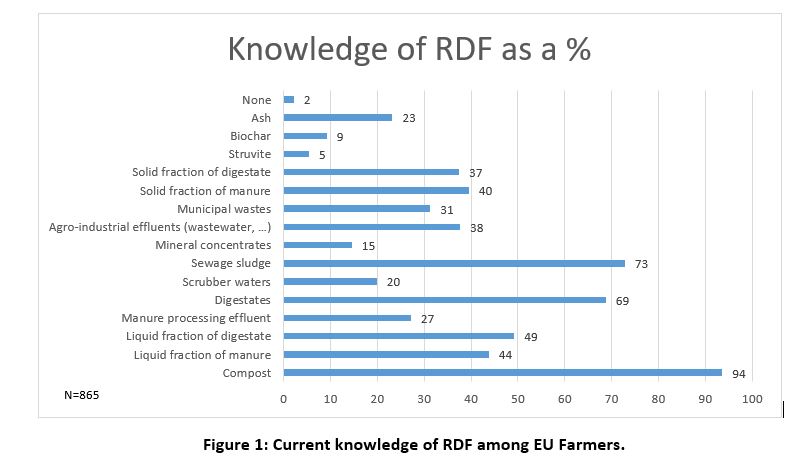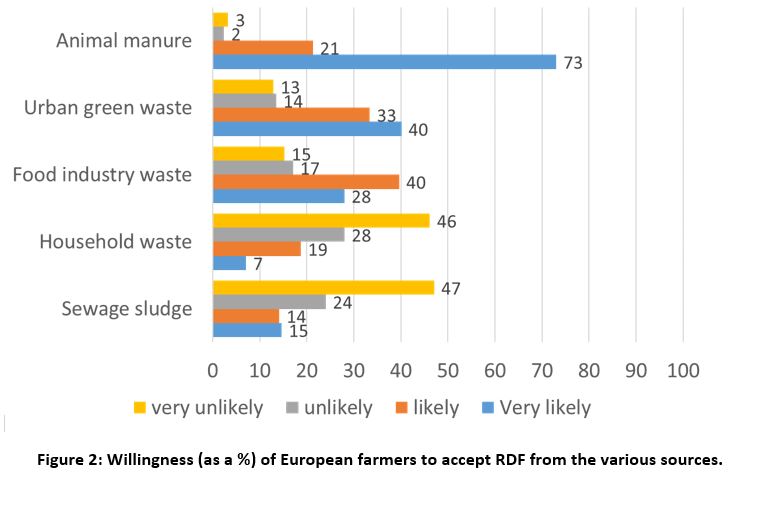The Interreg NWE ReNu2Farm project aims at increasing the recycling rates of plant nutrients Nitrogen (N), Phosphorous (P) and Potassium (K). P and K are limited and finite resources, and production of N fertilisers is energy intensive. Despite a number of recovery technologies been at a mature stage, the use of recycling-derived fertiliser (RDF) products by farmers has been limited to date. The aim of ReNu2Farm is to put the farming community at the heart of the research, therefore stakeholder engagement is essential to the success of this project. The ReNu2Farm team reached out to the largest stakeholder i.e. the farmers to identify the requirements of farmers to encourage them to use recycling-derived fertilisers.
Over 1,200 farmers from seven different countries (Belgium, France, Germany, Ireland, Luxemburg, The Netherlands and the UK), were surveyed as part of the ReNu2Farm project. Of those who responded to the survey 88% also use mineral fertilisers. This gives use an indication that there is potential demand for recycled nutrients on EU farms. To understand the current knowledge base of RDF among EU farmers, farmers were asked to identify which RDF products they have heard of. Compost and digestate came top of the list, however what was interesting is the third most popular answer was none, i.e. the farmers did not know of any RDF products. This is particularly interesting because in a follow up question 94% of respondents were able to identify compost as an RDF, 73% sewage sludge and 69% digestate (see Figure 1). When these two questions are put together it suggests that there is a disconnect. One suggested reason for this is a lack of awareness by EU farmers on the term of recycling-derived fertilisers, and as such an awareness campaign should be established of the benefits of using RDF.


